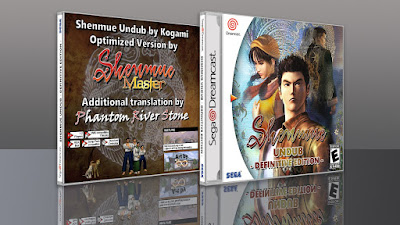The Atomiswave, for those who may not be aware, was an arcade system co-developed by Sammy and Sega and released back in 2003. As explained in Ross's excellent deep dive on the hardware here, the origins of the arcade platform are thought to have been born out of Sega's pivot out of the home console market, leaving the firm with a surplus of hardware it had no use for (namely, bits of Dreamcast tech).
The Atomiswave was first unveiled at the Japan Amusement Show in 2002, and piqued the interest of some of the biggest names in the arcade scene at the time, with SNK, Dimps, Psyko, Treasure, Compile, IGS, Visco and Tecmo all lending their support to the fledgling platform.
- See also: Lost Atomiswave KenJu ported to Dreamcast
- See also: Let's play some Atomiswave games on Dreamcast
- See also: The hunt for Premier Eleven
And lo, the Atomiswave became something of a hit among arcade gamers, hosting numerous inventive and colourful titles; and Sammy went on to purchase CSK's shares in Sega before eventually buying out the company in 2004. The intriguing thing about the Atomiswave is that even though its hardware was quite similar to the Dreamcast and NAOMI systems it was based on, Atomiswave games were incompatible with Dreamcast and so considered to be solely the preserve of dedicated arcade collectors. Until now, that is.
That's because developer megavolt85 has begun porting Atomiswave games to the Dreamcast, and if you head over to the Dreamcast-Talk forums you'll be able to see (and download) the fruits of their (very obvious) labour. So far, several Atomiswave titles have been ported to Dreamcast, and the GDI files made available. Of the handful of titles released so far, I have only played Faster than Speed - an arcade racer which plays (and looks) like the bastard lovechild of Need for Speed Underground and Scud Race.
It's actually a pretty fun racer, with lots of tracks and vehicles and some really nice handling. Oh, and it looks gorgeous. I've been playing this on ReDream on a MacBook Pro, and compatibility with some controllers has been a bit iffy, but as far as I can tell from browsing the forums, other emulators on PC work even better so your experiences may be better than mine. I did try to also play the game using an actual Dreamcast by loading the GDI file onto the Compact Flash modded Dreamcast, and while it would display the Faster than Speed custom artwork in Dreamshell, the game would not boot. So close...yet so far!
Edit - I got games working on a Dreamcast (thanks to Pcwzrd13 once again!). Check out the results.
One thing is clear though - this game and the work of megavolt85 is a revelation for the Dreamcast library. That Atomiswave games can now be sampled - in my case for the first time ever - is truly amazing; and a massive boon for digital preservationists. And this could be just the start of a whole new side of the Sega arcade library being opened up to Dreamcast owners who never knew such experiences existed. Exciting stuff indeed.
Apart from Faster than Speed, other Atomiswave games to be ported to Dreamcast in 2020 include King of Fighters XI, Metal Slug 6, and Samurai Spirits Tenkaichi Kenkakuden, and we'd be a bit daft to think that even more Atomiswave games are not on the cusp of being ported to our beloved console.
Head over to the Dreamcast-Talk forums to find out more. Thanks also to @pcwzrd13 for alerting those of us (me) who have maybe been a bit lax on keeping up with Dreamcast news this year.


























































